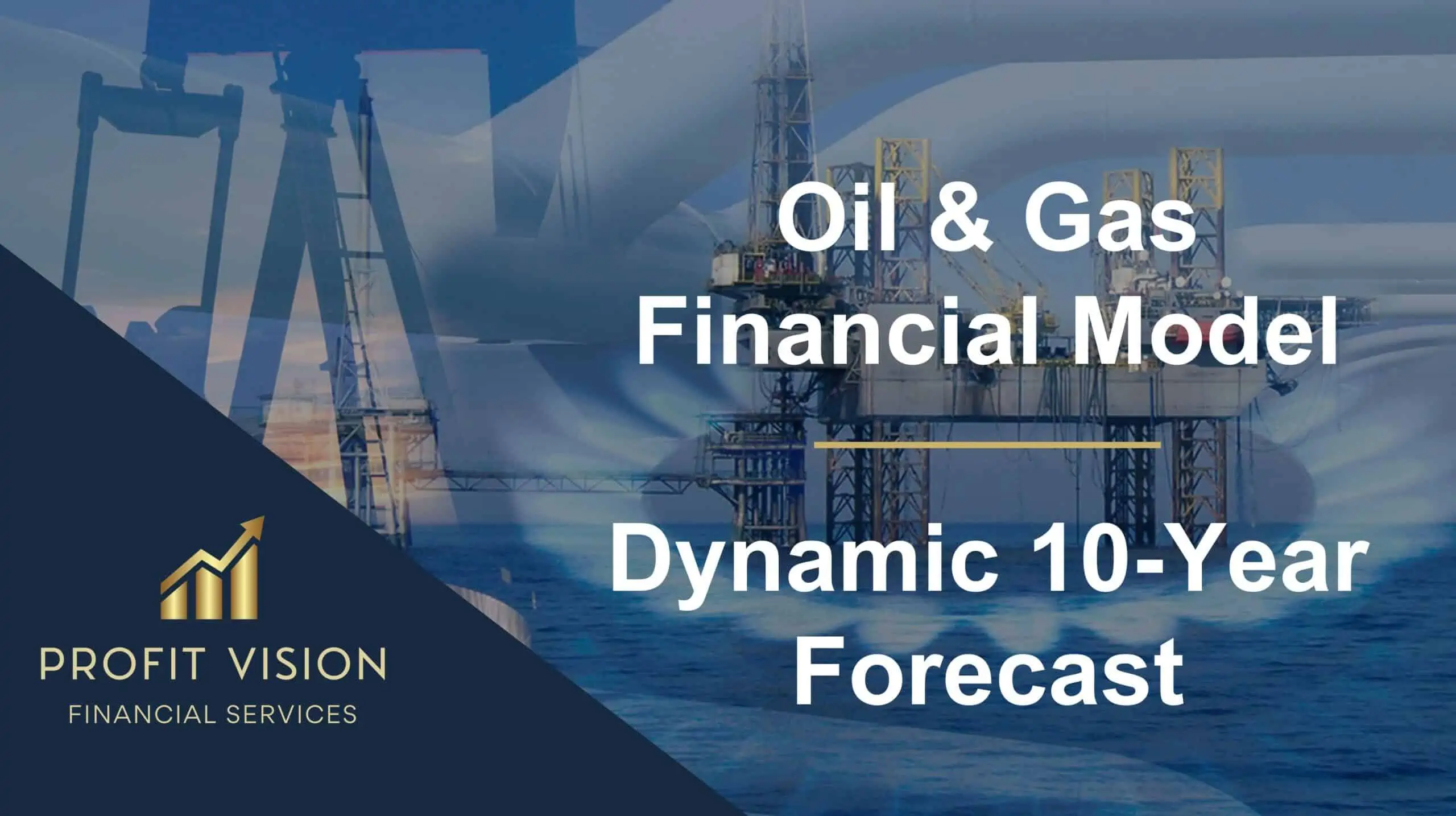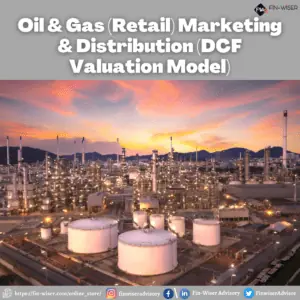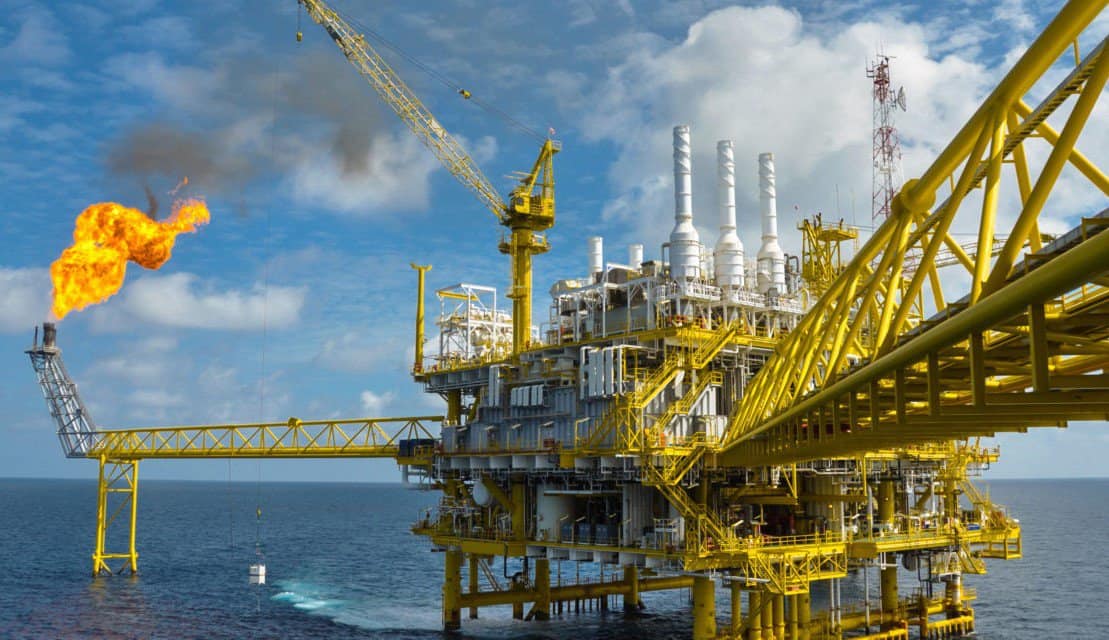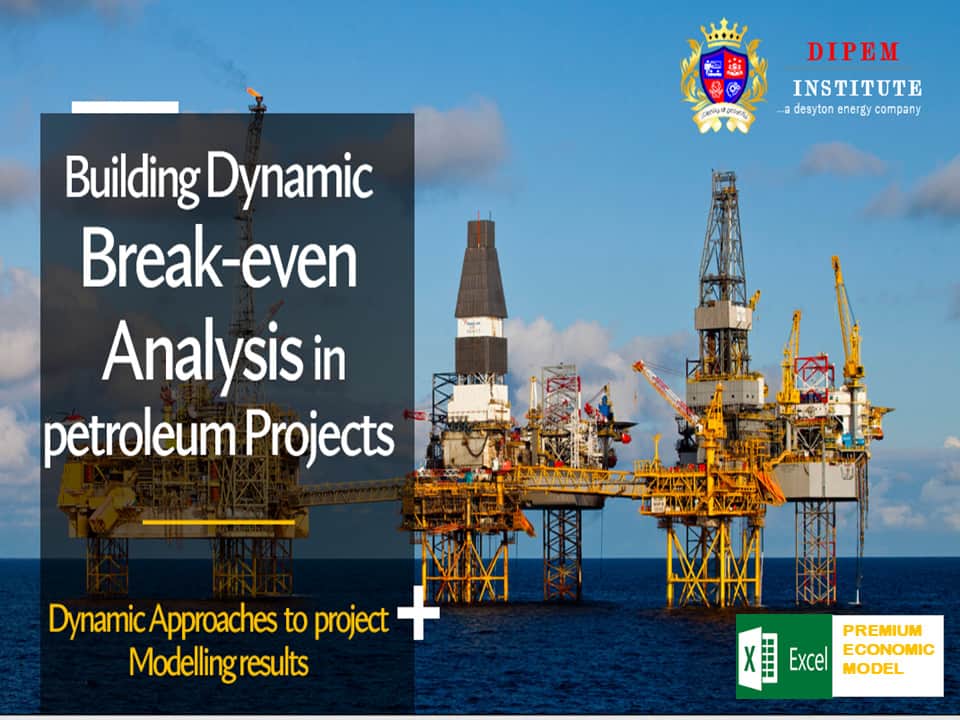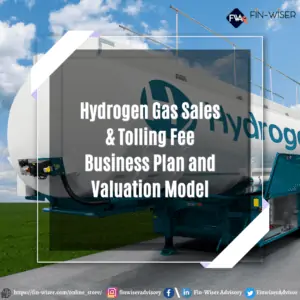Oil & Gas Financial Model – DCF and NAV Valuation (5+ Yrs.)
The Oil and Gas financial model with DCF (Discounted Cash Flow) and NAV (Net Asset Value) Valuation is a robust tool tailored to analyze the financial aspects of oil and gas exploration and production projects. It encompasses key components such as revenue projections, operating expenses, investment analysis, reserve estimation, and financial valuation methods. This model provides insights into project feasibility, investment attractiveness, and overall financial performance, enabling informed decision-making, risk assessment, and value optimization.
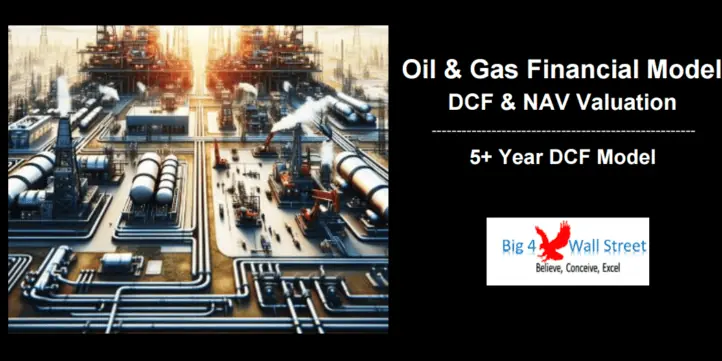
The Oil and Gas financial model with DCF (Discounted Cash Flow) and NAV (Net Asset Value) Valuation is a robust tool tailored to analyze the financial aspects of oil and gas exploration and production projects. It encompasses key components such as revenue projections, operating expenses, investment analysis, reserve estimation, and financial valuation methods. This model provides insights into project feasibility, investment attractiveness, and overall financial performance, enabling informed decision-making, risk assessment, and value optimization.
Key Components:
- Revenue Projections: The model assesses revenue sources from oil and gas production, factoring in production volumes and commodity prices.
- Operating Expenses: It includes costs for drilling, production, transportation, royalties, taxes, and other operational expenditures associated with oil and gas operations.
- Investment Analysis: The model evaluates capital expenditures for acquisitions, development & exploration, other property additions, determining the project’s initial investment and ongoing capital requirements.
- DCF and NAV Valuation: The model employs Discounted Cash Flow (DCF) and Net Asset Value (NAV) valuation methods to assess project economics and investment viability.
Key Benefits:
- Informed Decision Making: The Oil and Gas financial model empowers stakeholders to make data-driven decisions regarding project investment, resource allocation, and risk management.
- Risk Assessment: By considering production uncertainties, commodity price fluctuations, and operating costs, the model supports risk assessment and mitigation strategies.
- Investment Attractiveness: DCF and NAV valuations provide insights into the project’s economic viability, helping attract investors and secure financing.
- Value Optimization: The model enables decision-makers to optimize project parameters, such as annual production, and capital expenditures, to maximize project value.
In summary, the Oil & Gas financial model with DCF and NAV Valuation is a valuable tool for evaluating the financial performance and investment attractiveness of oil and gas projects. It supports informed decision-making, risk assessment, and value optimization, contributing to the success and profitability of oil and gas exploration and production ventures.
File Types: .xlsx and .pdf
——————————————————————————————————————–
MODEL GUIDELINES
So, a quick overview of the model, in the contents tab you can see the structure of the model and by clicking on any of the headlines to be redirected to the relevant worksheet.
On the manual tab you can feed the general information for the model such as: project name & title, responsible, timeline of the model and date and currency conventions.
Additionally, there is a description of the color coding of the model in the same tab. Inputs are always depicted with a yellow fill and blue letters, call up (that is direct links from other cells) are filled in light blue with blue letters while calculations are depicted with white fill and black characters.
There is also color coding for the various tabs of the model. Yellow tabs are mostly assumptions tabs, grey tabs are calculations tabs, blue tabs are outputs tabs (that is effectively results or graphs) and finally light blue tabs are admin tabs (for example: the cover page, contents, and checks).
Moving on to the Inputs: detailed inputs for revenues such production, and commodity prices, pre hedging and post hedging prices, costs splits between production linked expenses and non-production linked expenses, working capital (receivables, payables, and other assets and liabilities), fixed assets and capex (split into initial investment and new maintenance capex), debt & equity financing as well as valuation assumptions (such as discount rates used in the weighted average cost of capital).
In the summary tab you can see a high-level report with the main metrics and value drivers of the model. It can be readily printed on one page for your convenience.
Calculations: this is where all calculations are performed. The revenues are calculated and deducting the operating costs adjusted for inflation the operating profit is resulting. Based on the assets financed and the gearing of the financing the interest and depreciation are occurring. By using the working capital assumptions, the impact of the business cycle is presented. Finally, depending on the level of the investment considered the relevant debt financing is calculated (Long term debt and overdraft).
In the Outputs tab: everything is aggregated here into the relevant statements: profit and loss, balance sheet and cash flow.
Moving to the Valuation tab, a valuation is performed by using the free cash flows to the firm and then a series of investment metrics are presented (Net Present Value, Internal Rate of Return, Profitability Index, Payback Period, Discounted Payback Period, Sensitivity Analysis).
In the NAV tab, the net asset value calculates the value by considering the company’s assets, which include proven reserves of oil and gas, and other undeveloped land, and then subtracts liabilities such as debt and production and development costs.
In the Graphs tab: Various graphs present the business metrics, revenues, operating costs, and profitability. Then multiple charts present the working capital, debt & equity along with cash, assets, and cash flows which results in a valuation on a project basis as well as on an equity basis together with the feasibility metrics.
Checks: A dedicated worksheet that makes sure that everything is working as it should!
Important Notice: Yellow indicates inputs and assumptions that the user can change, blue cells are used for called-up cells, and white cells with black characters indicate calculation cells.
Similar Products
Other customers were also interested in...
Upstream Oil & Gas Project Analysis
The Upstream Oil & Gas Project Financial Model Template in Excel empowers you to project and dissect... Read more
Oil & Gas Financial Model – Dynamic 10 Y...
Financial Model providing forecast and valuation analysis of an upstream Oil & Gas Project. T... Read more
Oil & Gas Marketing and Distribution DCF Valu...
A detailed and user friend financial model that captures 5 years of Historical + 1 Year of Budget + ... Read more
Private Equity Oil and Gas Financial Model
The Private Equity Oil and Gas Financial Model evaluates the financial feasibility and investor retu... Read more
Oil and Gas Project Finance Model
Oil and Gas Project Finance Modeling Template. This is a project finance model for an oil and gas up... Read more
Economic Model for Oil and Gas Extraction Feasibil...
This model runs for 20 years and makes it easy to create a financial plan and feasibility study for ... Read more
Upstream Petroleum Operations Development Model
The main purpose of the model is to enable users to get a robust understanding of the upstream pet... Read more
Break Even Analysis in Petroleum Project Models
The main purpose of the model is to enable users to get a robust understanding of the business sen... Read more
Expert Sensitivity Analysis for Upstream Petroleum...
The main purpose of the model is to enable users to get a robust understanding of the business sensi... Read more
Hydrogen Gas Sales & Tolling Business Plan an...
Hydrogen Gas Sales & Tolling Fee business plan and valuation model is an excellent tool to asses... Read more
You must log in to submit a review.




















